

The Joys of Meal Prepping with Friends
Summary
Reflection Questions
Journal Prompt
Many of us have considered meal prepping as we seek improved efficiency and health in our daily eating habits. If you simply cannot bring yourself to meal prep alone, why not recruit a group of friends? This approach not only adds a social dimension to what can be a mundane task but also enhances the experience through shared learning and accountability. In this article, we outline the multifaceted benefits of meal prepping with friends and detail how to plan fun, engaging meal prepping sessions.
The Basics of Meal Prepping


Meal prepping is a systematic approach to food preparation, where meals or meal components are planned, cooked, and stored in advance, typically for the upcoming week. This practice is aimed at simplifying the process of eating healthy, homemade meals, reducing the time and effort required for daily cooking.
It involves selecting recipes, shopping for ingredients, and then cooking and portioning out meals into individual containers. This method is particularly beneficial for those with busy schedules, helping to maintain a balanced diet without the daily hassle of cooking from scratch.
Essential Tools and Ingredients
Successful meal prepping hinges on having the right tools and ingredients. Essential kitchenware includes a set of good quality knives, cutting boards, a range of pots and pans, and a variety of containers for storage, preferably airtight to keep meals fresh.
Basic pantry staples like grains, pasta, legumes, canned tomatoes, and spices are indispensable, as they form the foundation of many recipes. Fresh produce, lean proteins, and dairy or plant-based alternatives should be selected based on the chosen recipes. Investing in a good set of measuring cups and scales can also enhance precision and consistency in meal prep.
Tips on Planning a Meal Prep Session
Efficient planning is crucial for a smooth meal prep session. Start by choosing recipes that are both appealing and practical to prepare in bulk. It’s important to consider variety and balance, incorporating a range of vegetables, proteins, and carbohydrates. Creating a detailed shopping list based on these recipes helps avoid overbuying and ensures all ingredients are on hand.
Batch cooking large quantities of versatile ingredients, like grains or roasted vegetables, can save time and offer flexibility. Lastly, planning the cooking sequence can streamline the process – for instance, starting with dishes that require longer cooking times or preparing multiple items simultaneously if oven and stovetop space allows.
Why Meal Prepping with Friends?
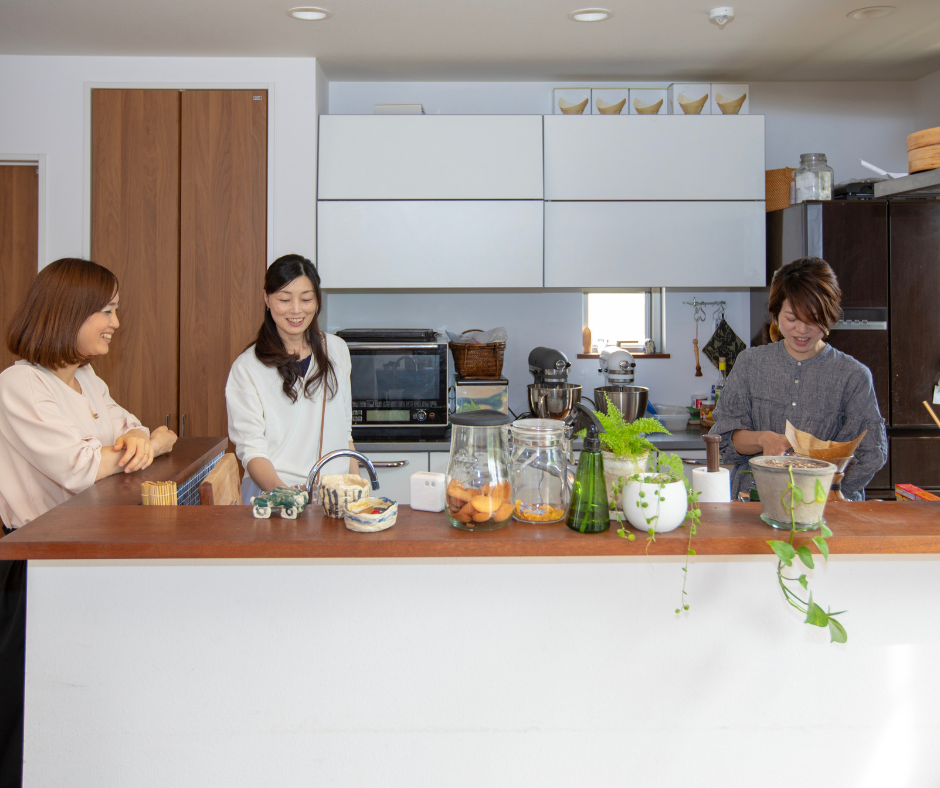

In today’s fast-paced world, finding time to spend with friends can be challenging. Meal prepping together provides an opportunity to catch up, share stories, and enjoy each other’s company in a relaxed setting.
It transforms the often solitary task of cooking into an engaging group activity. This shared experience not only makes the process more enjoyable but also creates a sense of community and belonging, which is essential for emotional well-being.
Strengthening and Creating Friendships
Engaging in meal prepping sessions can significantly strengthen existing friendships and pave the way for new ones. Working together towards a common goal, like preparing a week’s worth of meals, fosters teamwork and collaboration. Friends learn to communicate effectively, delegate tasks, and support each other.
For those new to the group or looking to expand their social circle, these sessions provide a relaxed environment to interact and bond over a shared interest in food and health. The kitchen, often considered the heart of the home, becomes a place where friendships are nurtured and solidified.
Motivation and Accountability in Group Activities
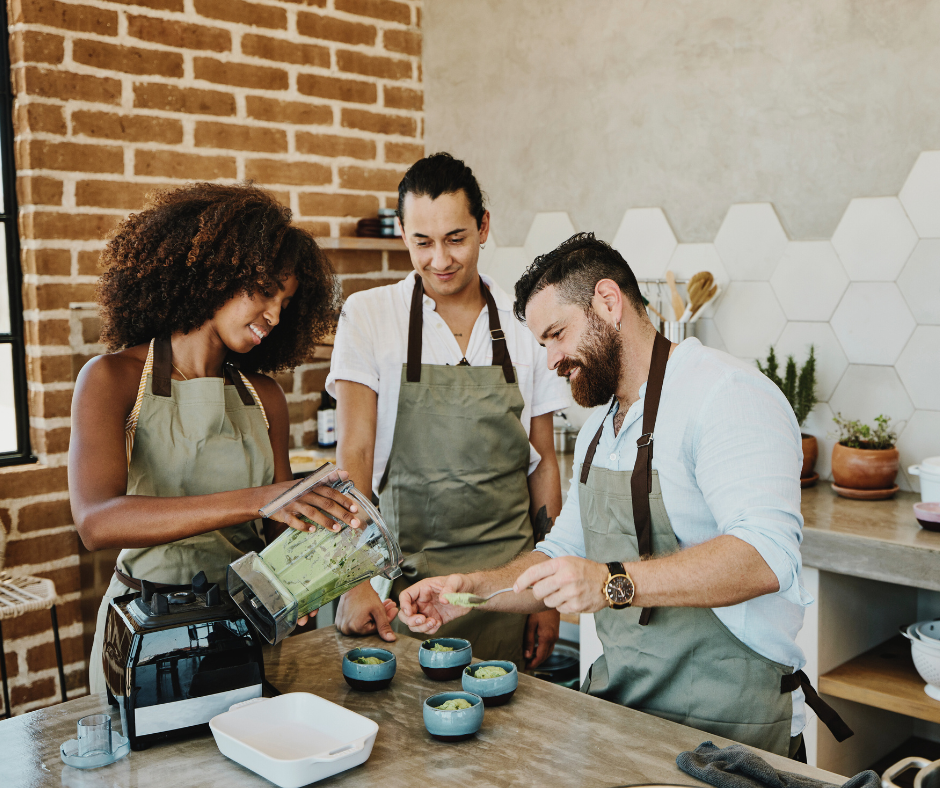

One of the key advantages of meal prepping with friends is the added motivation and accountability it brings. Staying committed to healthy eating and cooking habits can be challenging when doing it alone. In a group setting, friends motivate each other to stick to their meal prep plans and culinary goals. This shared commitment often leads to more consistent and successful meal prepping habits.
The accountability factor is heightened in a group; no one wants to be the person who didn’t show up or didn’t contribute. This collective responsibility encourages individuals to follow through with their commitments, making the process more effective and rewarding.
Learning New Skills
One of the enriching aspects of meal prepping with friends is the opportunity it provides for learning and sharing diverse cooking techniques and recipes. Every individual brings their unique set of skills and culinary knowledge to the table. Someone might be adept at chopping vegetables efficiently, another might excel in seasoning and flavoring, while someone else could have a knack for baking.
By working together, friends can observe and learn these skills from each other, enhancing their own culinary repertoire. Additionally, sharing recipes can introduce new flavors and techniques, expanding each other’s culinary horizons. This collaborative environment fosters a hands-on learning experience that is both informal and engaging.
Sharing Different Cultural Cuisines and Traditions


Meal prepping sessions become even more interesting when friends introduce dishes from their cultural backgrounds. This exchange of cultural cuisines offers a window into different traditions and food practices, encouraging an appreciation and understanding of diverse culinary heritages.
Friends can take turns presenting a dish that is significant to their culture, explaining its history and importance. This not only makes the meal prep experience more diverse and enlightening but also helps in building a deeper connection and respect for each other’s backgrounds. Such gatherings can turn into mini cultural festivals, celebrating the rich tapestry of world cuisines and traditions.
Enjoying Economic and Health Benefits
Meal prepping with friends can be a highly cost-effective practice. When individuals come together to cook in bulk, they can share the expense of ingredients, which often comes out cheaper than purchasing for single servings. Buying in bulk can also reduce the per-unit cost of many items, leading to significant savings. ‘
Additionally, pooling resources for ingredients minimizes waste, as friends can split perishable items like vegetables or dairy products, which might otherwise go unused and spoil if bought individually. The shared use of kitchen resources and tools can further cut down on individual expenses. This collective approach to meal preparation not only makes economic sense but also fosters a sense of shared investment and community savings.
Cooking meals at home, as opposed to eating out or opting for takeout, also has numerous health benefits. Homemade meals are typically lower in calories, sodium, and trans fats, which are common in restaurant and fast food. When you prepare food at home, you have complete control over the ingredients, allowing for healthier choices and substitutions.
For instance, you can use less oil, opt for whole grains, and include more fresh vegetables and fruits. Homemade meals also tend to contain fewer processed ingredients and additives, making them a healthier option. The process of cooking itself can be mindful and therapeutic, contributing positively to mental health.
Planning a Meal Prep Get-Together


To successfully organize a meal prep get-together, start with a clear plan. Choose a date and time that works for everyone involved and consider the frequency of these gatherings – whether it’s a one-time event or a regular weekly or monthly occurrence.
Communication is key, so setting up a group chat or email thread can be helpful for coordination. It’s also important to assess the dietary preferences and restrictions of the group to ensure that the meals prepared are suitable for all. Consider the size of the group and the kitchen space available, as this will influence the scale of meal prepping and the logistics of the session.
Deciding on Recipes and Dividing Responsibilities
When selecting recipes, aim for a mix that caters to varied tastes and nutritional needs, keeping in mind the ease of preparation in a group setting. It can be beneficial to have a theme, like Mediterranean cuisine or vegan dishes, to streamline recipe selection. Once the menu is set, divide responsibilities fairly.
This can involve assigning specific dishes to individuals or breaking down tasks like chopping, cooking, and packaging among the group. It’s also a good idea to determine who will bring which ingredients or kitchen tools to avoid duplication and ensure everything needed is available. Collaboration in planning not only lightens the workload but also enhances the group experience.
Managing Space and Resources in a Kitchen Setting
Efficient use of kitchen space and resources is critical, especially when cooking with a group. Before the session, it’s wise to declutter the kitchen, ensuring ample counter space and organizing tools and ingredients for easy access. During the prep, designate areas for different tasks – one for chopping, another for cooking, and a station for packaging and labeling meals.
This helps avoid overcrowding in one area and keeps the workflow smooth. Be mindful of appliance use; stagger tasks that require the same appliance (like the oven or stovetop) to avoid bottlenecks. Good communication and flexibility are essential, as is cleaning as you go to maintain an orderly kitchen and make the post-prep cleanup easier.
Making Meal Prepping More Enjoyable
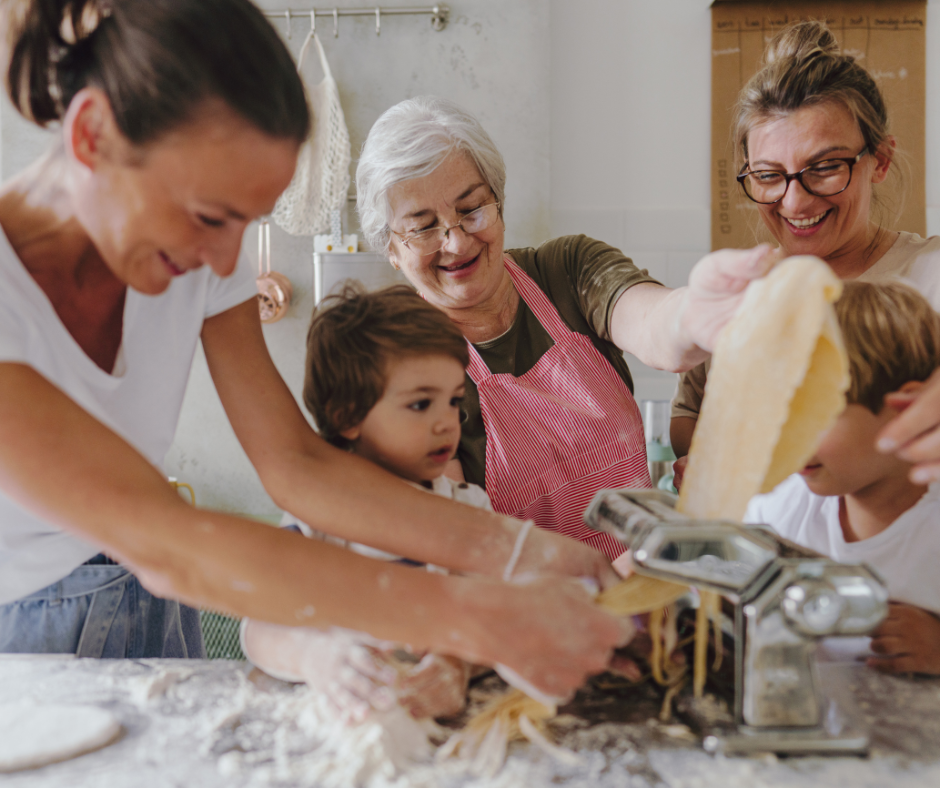

Adding a fun element to meal prepping can transform it from a routine task into an enjoyable experience. One way to do this is through themed cooking sessions. For instance, you could have an Italian night, a taco Tuesday, or a vegan feast, allowing everyone to explore different cuisines and recipes.
Music is another great enhancer; curating a playlist that everyone contributes to can set a lively and upbeat mood. Friendly competitions, like who can chop the most vegetables in a minute or create the most artistic dish presentation, can add a playful and spirited dimension to the activity. These elements not only make the process enjoyable but also stimulate creativity and collaboration among participants.
Incorporating Games and Other Activities
To break the monotony, incorporating games or other activities during breaks can be refreshing. Simple games like food-related trivia, guessing ingredients in a dish, or even quick card games can infuse energy into the group. These activities offer a mental break from the cooking tasks and provide an opportunity for everyone to bond and laugh together. For longer meal prep sessions, you could even include a short group exercise or stretch break to keep the energy levels high and ensure everyone stays physically and mentally engaged.
Creating a Relaxed and Enjoyable Atmosphere
The overall atmosphere plays a crucial role in making meal prepping a pleasant experience. A relaxed environment where everyone feels comfortable and welcome is key. Encourage open communication, where people can share their cooking tips, talk about their day, or discuss their favorite foods.
It’s important to ensure that the kitchen doesn’t become too stressful or chaotic; a calm, organized approach to cooking can help maintain a positive ambiance. Remember, the primary goal is to enjoy the process as much as the outcome.
Celebrating small achievements, like mastering a new recipe or efficiently collaborating, can contribute to a sense of accomplishment and enjoyment for the whole group.
Overcoming Common Challenges When Planning a Meal Prepping Event
Addressing Dietary Restrictions
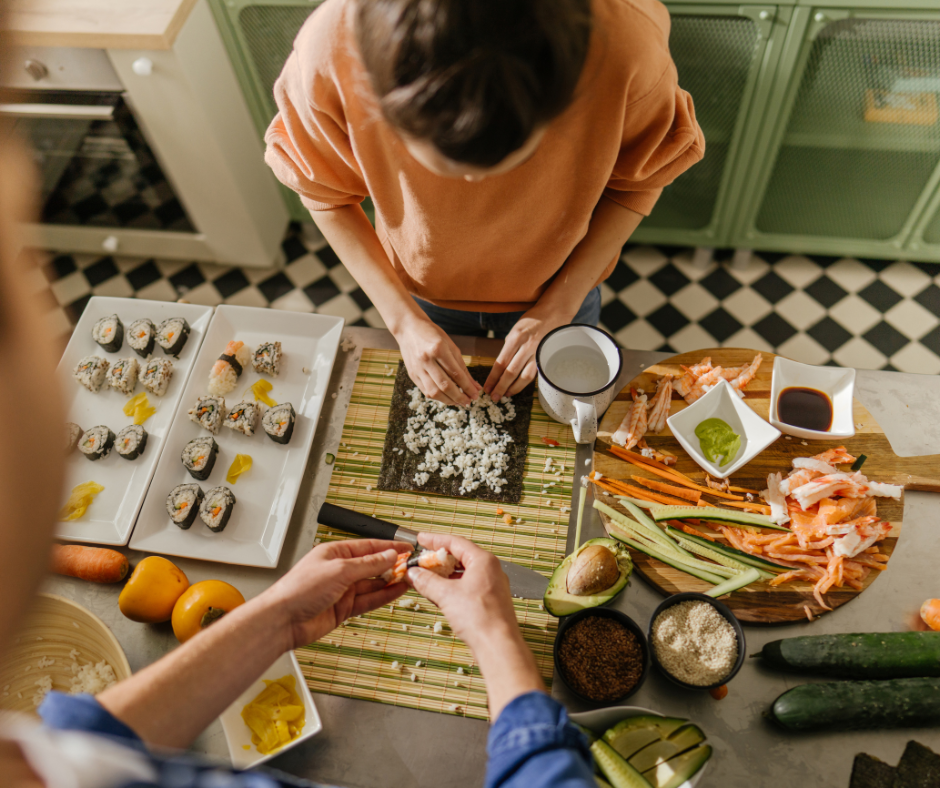

One challenge in group meal prepping is accommodating varying dietary restrictions, such as allergies, vegetarian or vegan preferences, or gluten intolerance. To manage this, clear communication before the session is key.
Everyone should disclose their dietary needs, and the group can plan a menu that includes options for all. This might involve preparing some common dishes that everyone can eat and some specific dishes catering to individual needs.
Cross-contamination is another concern, especially with allergies. Using separate utensils and cooking areas for different types of food can help prevent this. This approach not only ensures safety and comfort for everyone but also educates the group about diverse dietary needs.
Managing Space Limitations
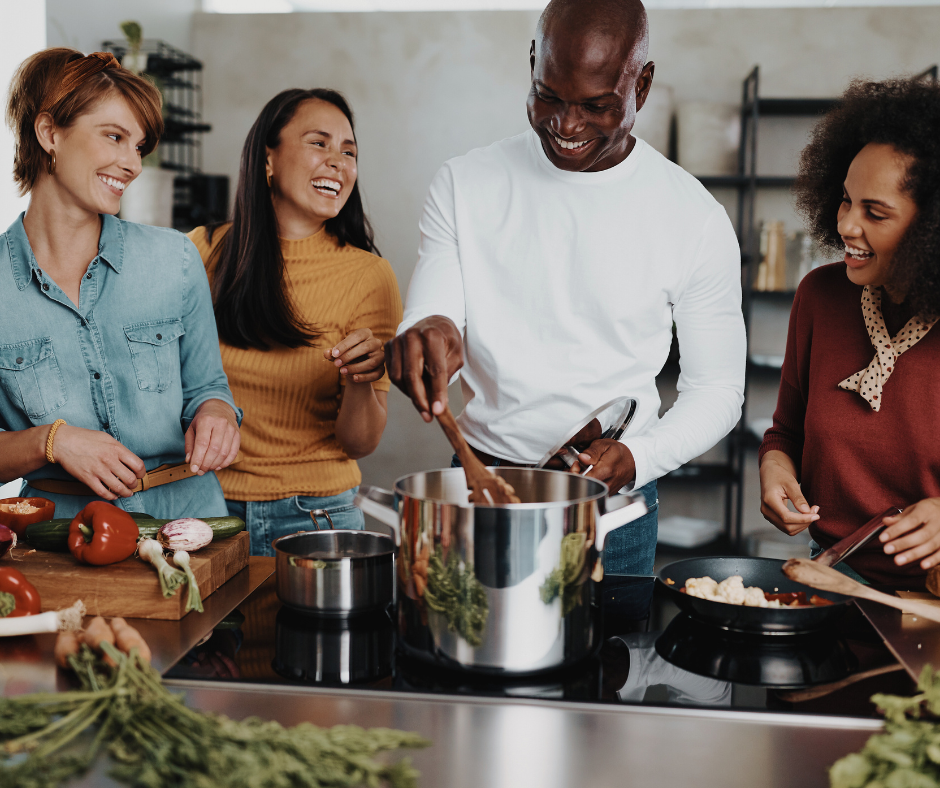

Space can be a limiting factor, especially in smaller kitchens. To tackle this, first, assess the kitchen space and plan accordingly. This might mean limiting the number of participants or the menu complexity.
Organizing the workspace efficiently is crucial, so designate specific areas for different tasks like chopping, cooking, and packaging. Utilizing kitchen tools effectively can also save space; for instance, using a single large pot to cook multiple batches of a dish.
Scheduling different tasks at different times can prevent overcrowding in the kitchen. For instance, while one group is cooking, another can work on prepping or packaging.
Overcoming Scheduling Conflicts
Finding a time that suits everyone can be challenging, given people’s busy schedules. To address this, plan well in advance and consider setting a regular schedule, like a specific day each month, which can help participants plan ahead. Using scheduling tools or apps where everyone can input their availability can simplify the process of finding a common time.
In cases where not everyone can attend every session, having a flexible approach is helpful. Those who can’t make it might contribute in other ways, like planning the menu, buying ingredients, or preparing some food in advance. This ensures everyone remains involved and the group can continue to enjoy the benefits of meal prepping together.
Final Thoughts on Meal Prepping with Friends
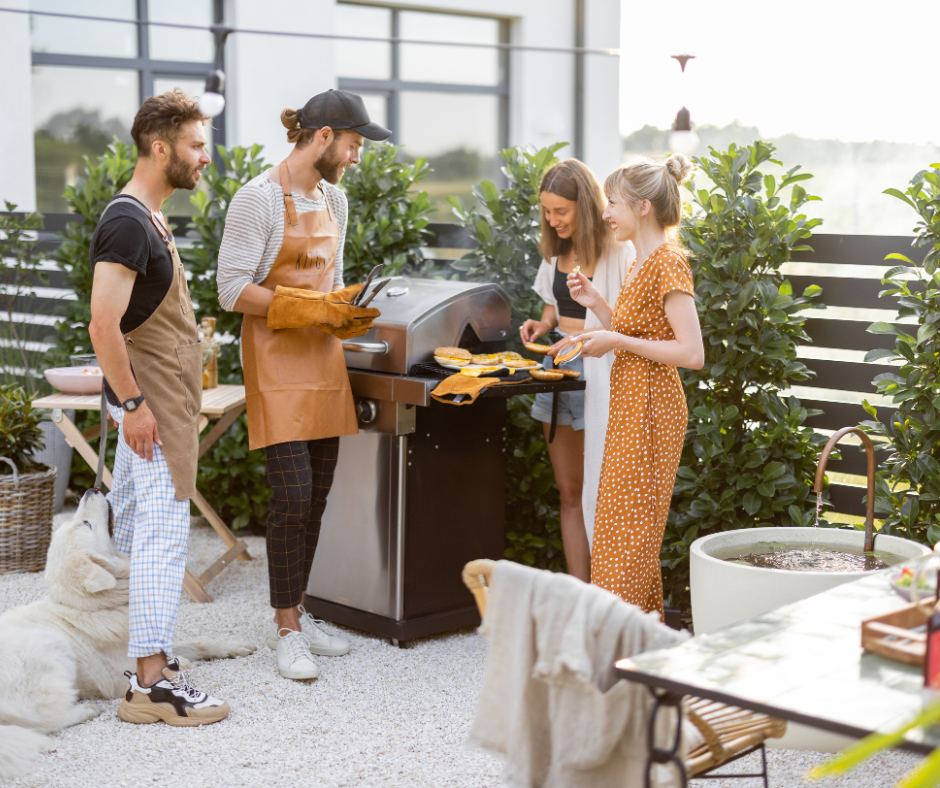

Meal prepping with a group of friends transforms this often solitary task into an opportunity for socializing, learning, and sharing. The challenges that come with coordinating such gatherings are minor compared to the rewards of shared laughter, diverse flavors, and the satisfaction of a well-stocked fridge. So, why not gather a group of friends and embark on this culinary adventure? Whether it’s to explore new cuisines, save time and money, or simply enjoy the company, meal prepping together is an enriching experience worth trying. Let us know if you give a try in the comments below!








